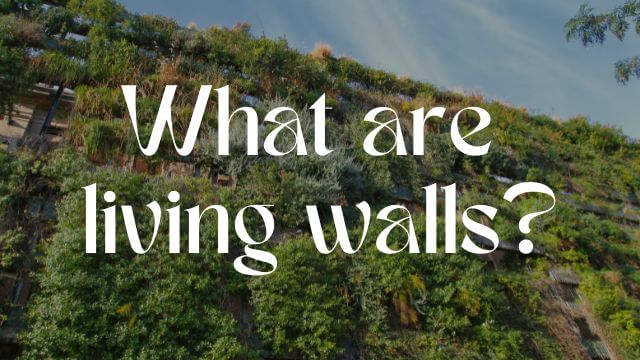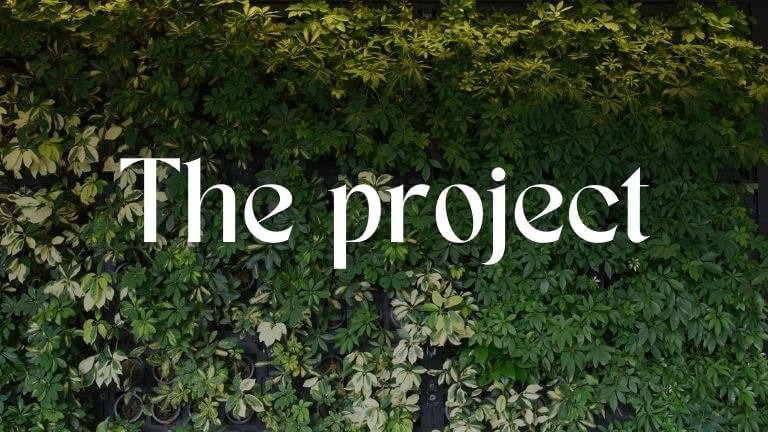Tackling Maths Anxiety

A living wall is a system of panels with pockets or troughs attached to a wall that plants grow in. It usually has a built-in irrigation system, to provide water and nutrients.
This nature-based solution can be interior or exterior to a building – although we’re focusing on external living walls, since these are more designed for nature to benefit from them too.
We highlight some of the environmental, social and economic benefits of external living walls in the infographics below.


Through this project, we aim to highlight the huge value of using nature-based solutions like living walls in urban areas, to make these places better for both people and planet.

We’re working to raise awareness of how living walls can provide many benefits, as a nature-based solution to a host of issues, particularly biodiversity loss and the effects of climate change (including extreme heat and rainfall), and even air and noise pollution. The plants and soil also sequester carbon, so can help contribute to net zero targets.
Through this project, we want to show how these structures can be great for urban buildings, by making use of vertical space. This is especially useful for nature since walls are less likely to be disturbed, compared to busy foot/vehicular traffic areas.
There can be challenges with installing living walls on an existing building – we’ll soon share a case study of our experience designing and installing the living wall, so stay tuned for updates on this!



The research focus
The team from the University of Plymouth are currently looking at how the living wall reduces the amount of heat entering the Melo Cafe in the summer, and so reduces the need for artificial cooling. It will also have insulation benefits in winter, and the team have previously demonstrated that living walls can reduce heat loss from buildings by over 30%.
The research team are especially interested in how the choice of leaf type (with different size, colours and textures) and plant form (trailing, bushy,…) can make a difference to the heat flux through the building…
… and this is why the research zones at each end of the living wall are stripy! The researchers need 1m2 square zones to reliably test how effective one particular plant type is. For aesthetic purposes, we have carefully chosen complementary plant types to make stripy columns, approximately 1m wide.
We’re also using locally-sourced biochar in our compost from Trimplants in Honiton (who also supplied the compost, and many of the plants in the living wall). Biochar is a really great way to lock up carbon from waste organic matter, and it has lots of benefits from supporting soil microbes to absorbing forever chemicals. Find out more about Trimplants’ projects around biochar on their website.

The central zone is where we got a bit more creative, choosing a variety of plants for year-round wildlife benefits, as well as shade for the windows below.
There are lots more ways in which we’d like to study the living wall in future – but it’s all funding and resource-dependent! If you’re a researcher looking to work with us, please do get in touch.

Living walls for urban cooling
One of the main challenges for this building is that it faces South – so gets a lot of direct sunlight for most of the day in summer.
As we show in this thermal camera image before the living wall was installed, even on a warm day in September (23°C at the time the photo was taken) the frontage is around 40°C on the walls and patio area, with some hot spots getting towards 50°C.
Do you notice the temperatures of the tree, grasses and plants in the planter? Plants are cool!
Check out our Making Exeter Cooler page for more information around this theme!

Visiting Melo? Join the citizen science project!
We are running a project on iNaturalist, which is a fantastic open-source citizen science website and app that allows people to record observations of nature – this data can be incredibly useful for biodiversity researchers locally and globally!
Set up a free account, then check out our YouTube Shorts video to see how easy it is to record observations on iNaturalist. If you pop down to Melo to see the living wall, come and contribute your observations via the app!
You can understand the zone we’re monitoring on the project page. Contribute your observations to our project by searching for ‘Melo/Lumi Exeter BioBlitz’ in the ‘Add to project’ box.
Make your own spaces wildlife-friendly + climate-resilient
There are lots of ways that we can make our outdoor spaces good for people and planet – as we’ve shown, you can even just use wall space! Here are some ideas:
- – Grow a variety of pollinator & biodiversity friendly plants that provide food and shelter at different times of year. This is great for supporting biodiversity!
- – Make use of vertical spaces: climbers are great for keeping walls cool in summer, as well as taking up little ground area.
- – Don’t use chemicals to kill insects or weeds – they’re damaging to ecosystems. Check out the Wildlife Trusts useful information page about avoiding chemicals in your garden.
- – Use citizen science platforms like iNaturalist to help record biodiversity in your local area and contribute to research grade databases.
- – Get involved in local action! Check out our Make an Impact page for inspiration.
Grow up!
Although having plantable pockets allows for a more diverse range of plants to grow against the wall, there are simpler solutions which still provide benefits for buildings and nature.
The Royal Horticultural Society found that ivy is one of the most effective plants for keeping buildings cooler (as well as less damp). It’s also great for wildlife, flowering later in the summer, and providing evergreen shelter.
There are lots of other options too – see the photos and caption below, and more ideas from the RHS.








